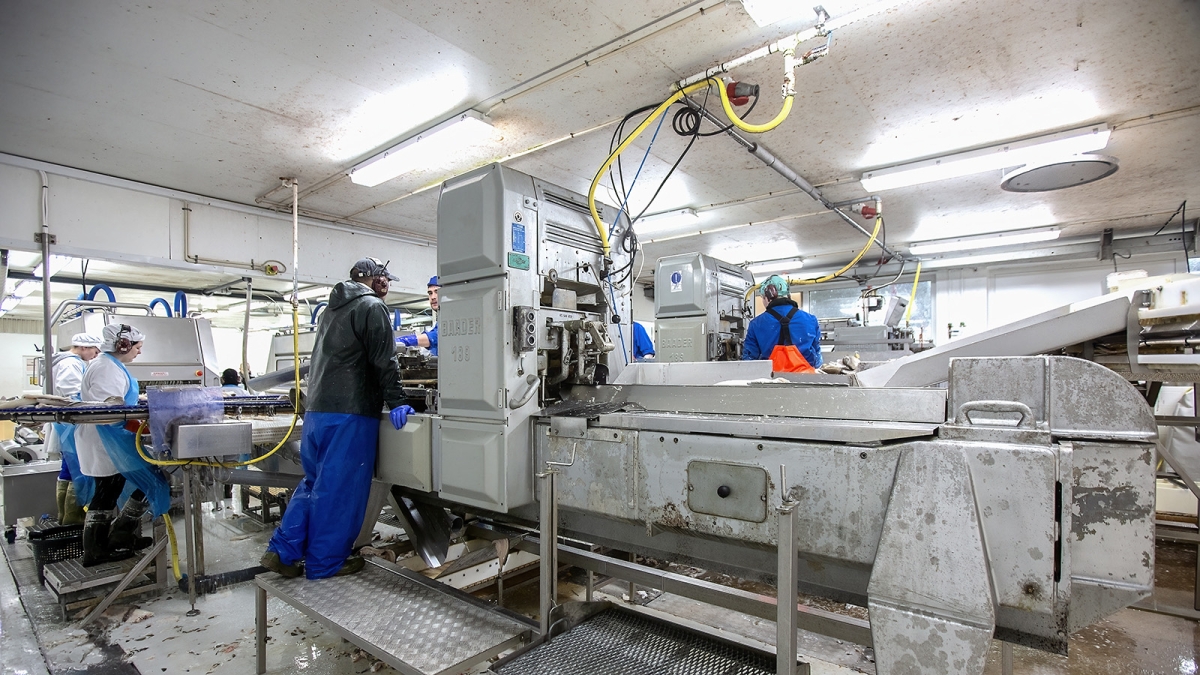Wages (Pay as you earn)
16. Oct 2024
Wages taxed at source rise 5.3%

Wages increased by 5.3% in the period from October 2023 to September 2024 compared to the previous 12-month period.
[px-graph-5]
The trend shows that wage payments declined at the onset of the Covid-19 pandemic in 2020. The trend then reversed in the second half of 2021, and wages have since seen fairly steady growth.
[px-graph-1]
Women lead wage growth
Women’s wage growth has been relatively steady in recent years, while men's wage growth was more affected when the pandemic hit. In recent years, men have accounted for about 60% and women 40% of wages.
[px-graph-2]
Women enjoyed more wage growth than men in the past year. Wages for female employees increased by DKK 400 million (9%) compared with the previous period. Male employees were paid DKK 240 million (3%) more. Women in public-service jobs accounted for the highest wage growth, at DKK 336 million (11.4%).
[px-graph-4]
Wages by region
Below is a breakdown of wages by region where the wages were paid out. Sandoy and Suðuroy regions had the highest wage growth, at above 7%. Suðuroy was the only region seeing a decline in paid wages, dropping 0.7% year-on-year.
More detailed wage statistics are available on the following regional pages: Norðoya region, Eysturoyar region, Norðstreymoyar region, Suðurstreymoyar region, Vága region, Sandoyar region, Suðuroyar region
[px-graph-6]
Lower wages in fisheries
The table below shows the A-taxable wages at the first level of the new industry classification in the past 12 months compared with the previous 12-month period.
The biggest wage increases in money terms were registered in ‘Public administration and defence; compulsory social security’. The biggest percentage increase was in ‘Arts, entertainment and recreation’. ‘Agriculture, forestry and fishing’ was the only industry that saw lower wages, falling 5% year-on-year.
[px-graph-3]
Within ‘Agriculture, forestry and fishing’, we see that the biggest wage decline in money terms was in ‘Pelagic fisheries’. Wages in ‘Demersal fisheries’ and ‘Other fishing’ have also gone down. Aquaculture, on the other hand, saw a year-on-year increase of 3% in paid wages.
[px-graph-7]
Average wage
The average wage per person was DKK 34,278 in September, 3 percent higher than in September 2023. The graph below shows the average wage by sex. In September, men’s average wage was DKK 39,800, some 40 percent higher than the average for women, which stood at DKK 28,272 in September. The men’s average wage is unchanged compared with the previous 12-month period, while women’s average wage increased by more than 8%.
[px-graph-5]
About the wage statistics
Wages as a statistical concept are part of the broader definition of compensation for employees. Compensation is divided into a) wages and b) employers' contributions to social schemes, including pensions. The terms are based on the description in the national accounting manuals 'System of national accounts' published by the UN and 'European system of accounts' published by Eurostat.
According to this definition, wages include wage components such as basic wages, allowances, overtime pay, holiday pay and employee benefits. Not included are employer social benefits such as pensions, unemployment insurance and maternity benefits.
The wage statistics only include cash wages paid by employers to employees through the PAYE system. The wage statistics thus cover A-taxable wages from employers who are economically active in the Faroe Islands. All wage payments that meet the above requirements are included, regardless of whether the employee resides in the Faroes or abroad.
Updates to wage statistics
The wage statistics system was revised in the first half of 2024. Key updates include:
- Mean and median wage figures are calculated based on employees' total wages. These figures can also be broken down by municipality of residence, industry, or sector.
- Main industry according to NACE Rev. 2 (2008). The wage statistics are restructured to comply with the internationally comparable classification NACE rev. 2. (2008). Levels 1 and 2 of the classification are directly comparable. In level 3, some selected sub-industries are further divided to accommodate special Faroese conditions. The main industry is the industry in which the employer has the most activity.
- Sectors. Wage figures can now be classified according to whether the employer is under public or private control. The sector classification is based on the international classification in Eurostat’s ‘European system of accounts’. The sectoral division in the statbank is a simpler configuration of this classification.
- Employees’ citizenships are further broken down into regions and continents.
- Residency status, showing wage trends of individuals with or without long-term residency status.
- Municipality of residence, showing wage trends based on the employee’s municipality of residence.
- Employees’ main or secondary occupation. This feature makes it possible to see how much is paid in wages where the employee earns the highest wage.
Revised statistics
Wage statistics have been updated and revised. These changes have led to a slight increase in total wages, particularly in recent years. For 2023, about DKK 300 million have been added to total wages paid, bringing the total to DKK 12.2 billion in 2023. This increase is due to the inclusion of employers registered in the Faroese International Shipping Register (FAS), who are now considered part of the Faroese economy. Another change is that that certain payments via the PAYE system, previously not considered wages, are now correctly recorded as wages. Most of these payments were previously registered as public benefits. Due to these changes, the latest figures cannot be compared to previous data. Older tables are still accessible in the statbank but will not be updated. These tables are labelled 'Outdated' in the statbank.